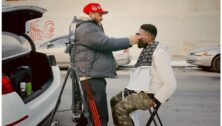BSA’s Ongoing Commitment to Youth Safety Makes It One of the Safest Organizations for Kids

The Boy Scouts of America’s Chapter 11 bankruptcy filing has been featured prominently in the headlines this week.
The move to file for bankruptcy was made as a way for the national organization, headquartered in Texas, to work out a compensation plan for abuse victims while continuing to operate and fulfill its mission to serve youth, their families, and local communities. Local councils, including the Chester County Council, are legally separate, distinct, and financially independent from the national organization and are thus not part of the filings.
The BSA, meanwhile, has developed some of the strongest, expert-informed barriers to abuse found in any youth-serving organization. They include:
- prompt mandatory reporting to law enforcement of any allegation or suspicion of abuse
- the Volunteer Screening Database – a tool the CDC recommends for all youth-serving organizations – which prohibits known or suspected abusers from registering for Scouting programs
- criminal background checks for all volunteers and employees
- mandatory youth protection training for all volunteers and employees every two years
- a ban on one-on-one contact between adults and youth – in person, online, or via text
- educational materials on youth safety for parents and Scouts
- a 24/7 helpline (1-844-Scouts1) and e-mail (Scouts1st@Scouting.org) for help accessing in-person counselling and assistance reporting any suspected abuse or inappropriate behavior
“I can also assure you that our volunteers and employees take youth protection extremely seriously and do their part to help keep kids safe,” said Jeff Spencer, the Scout Executive/CEO of the Chester County Council.
Scouting is safer now than ever before. (Approximately 90 percent of pending and asserted abuse claims are related to abuse from more than 30 years ago.) Experts have agreed that the BSA is one of the safest places for kids and that the BSA’s policies work in Scouting and beyond.
“For example – the Boy Scouts in my son’s case – I consider that community the safest place he can be,” said Dr. Michael Bourke, the Chief Psychologist of the Behavioral Analysis Unit for the U.S. Marshals Service. “When you have that net of vigilance, when you have every adult volunteer who goes through youth protection training, who understands policies, (where) everyone’s on the ‘same page,’ where all of these systems are in place, these barriers, it’s actually the safest place you can be.”
“The very policies and procedures that the Boy Scouts have in place – such as two-deep leadership and no one-on-one contact between leaders and children – are very important not only for youth-serving organizations, but also in daily life,” said Dr. Barbara Knox, the Medical Director of the University of Wisconsin’s Child Protection Program. “It’s really a good policy for parents to follow as well.”
Click here to learn more about the Boys Scouts of America’s ongoing commitment to keeping Scouts safe.
[uam_ad id=”80503″]
.
[uam_ad id=”80502″]
Connect With Your Community
Subscribe to stay informed!
"*" indicates required fields



























![95000-1023_ACJ_BannerAd[1]](https://vista.today/wp-content/uploads/2023/03/95000-1023_ACJ_BannerAd1.jpg)




















